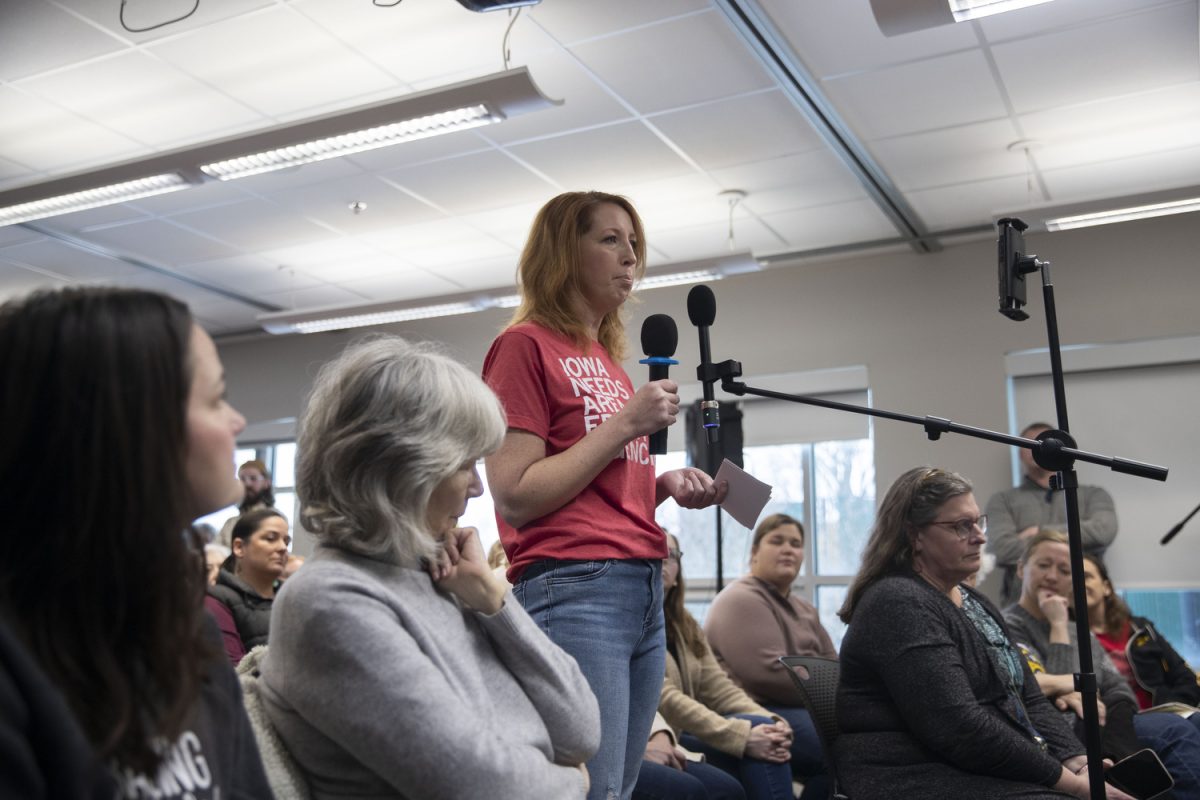Iowa’s Area Education Agencies are starting the school year with 429 fewer staff than last year, according to data shared by Iowa Democrats Thursday.
The decrease in staff amounts to 12 percent across all nine of Iowa’s AEAs. All but one AEA saw a decrease of more than 10 percent at the beginning of this year. Grant Wood AEA, the state’s third-largest AEA that serves east-central Iowa, including Johnson County, saw a 16 percent or 84-person decrease in staff.
Democrats blamed a new state law, signed by Iowa Gov. Kim Reynolds in March of this year, which overhauled Iowa’s AEA system. The law restructured how AEAs are funded and altered the responsibilities of AEAs, which traditionally provided special education, media services, and general education support to Iowa’s school districts.
“Fewer staffers in the AEAs means that there are 429 fewer professionals on the ground providing vital services for kids in our public schools,” State Rep. Lindsay James, D-Dubuque, said during a news conference on Thursday. “These are kids across the board who will be losing services.”
Reforming AEAs was the top priority for Reynolds this last legislative session, which she said were too top-heavy with administrators and needed to be made more efficient. A key priority of the legislation she proposed gave school districts control of their funding and shifted AEAs to a fee-for-service model.
The law, this year, diverts 60 percent of funding for media and education services previously earmarked for AEAs to school districts to spend on the services. Next year, schools will receive all general education and media services dollars originally earmarked for AEAs.
No special education dollars will be diverted from AEAs this year, but 10 percent will be diverted to school districts next year.
The bill also moved some oversight capacity to the Iowa Department of Education and created a new state department of special education within the department.
The bill aimed to give districts more control of the services they get from AEAs and allow them to contract with private companies or offer the services themselves.
AEA funding was drawn from taxes levied by school districts and state and federal education funding. Now, AEAs must negotiate contracts with school districts for services.
Democrats argued that moving to a fee-for-service model would destroy the economy of scale that prompted the creation of Area Education Agencies. Created in the 1970s, AEAs pooled resources between small and large districts to provide special education services that rural schools could not provide for their students.
“The original AEA system was set up to give the AEAs a pool of money that would be distributed equitably to help every child in Iowa, regardless of where they lived,” Senate Democrats leader Pam Jochum said on Thursday. “But the changes that the governor and the statehouse Republicans have made to the AEA system was not written with the best interest of our students and our educators in mind.”
In response to the Democrats’ press conference on Thursday, Mason Mauro, a spokesperson for the governor, said that no education funding had been cut. Rather, Mauro said it was instead given to local districts to control.
“Some schools have hired former AEA employees, while others have chosen to continue to work with AEAs,” Mauro said in a statement Thursday. “As schools decide how to best use their resources to serve their students with special needs, resources will naturally shift. That is the intent — to strengthen the education experience for all students, including students receiving special education services.”



